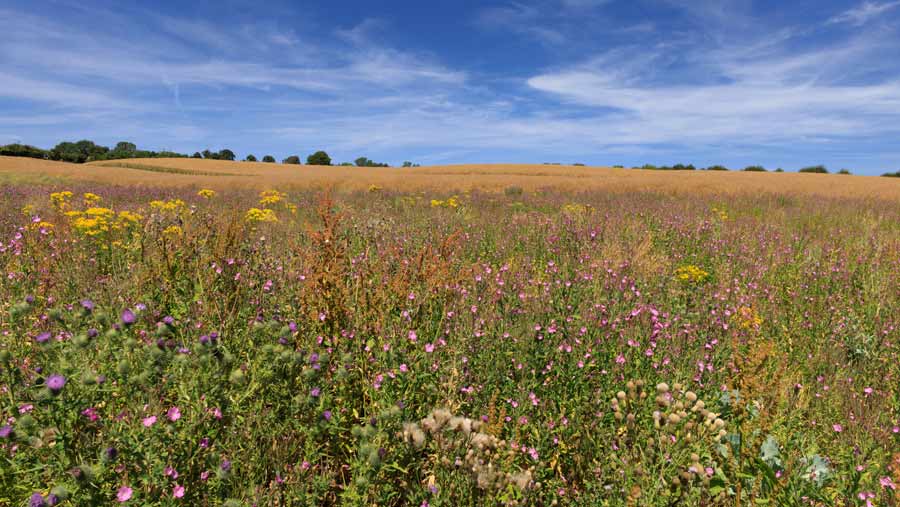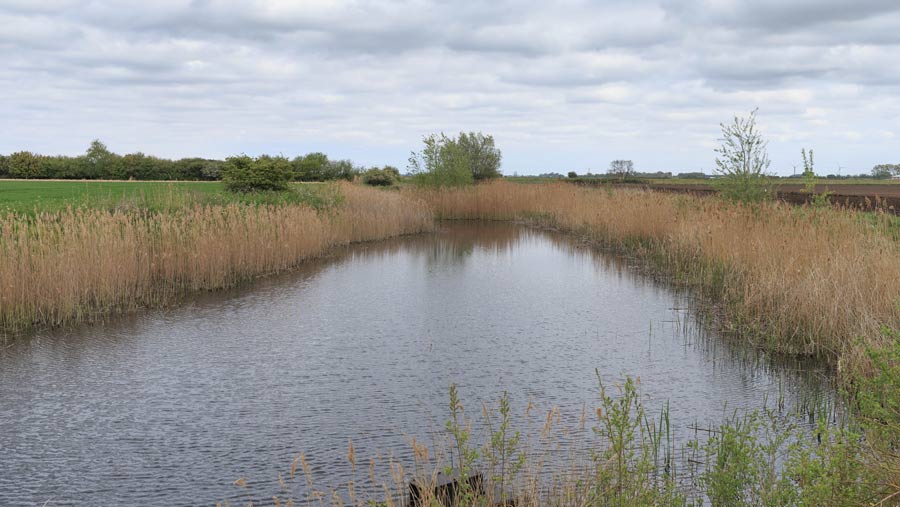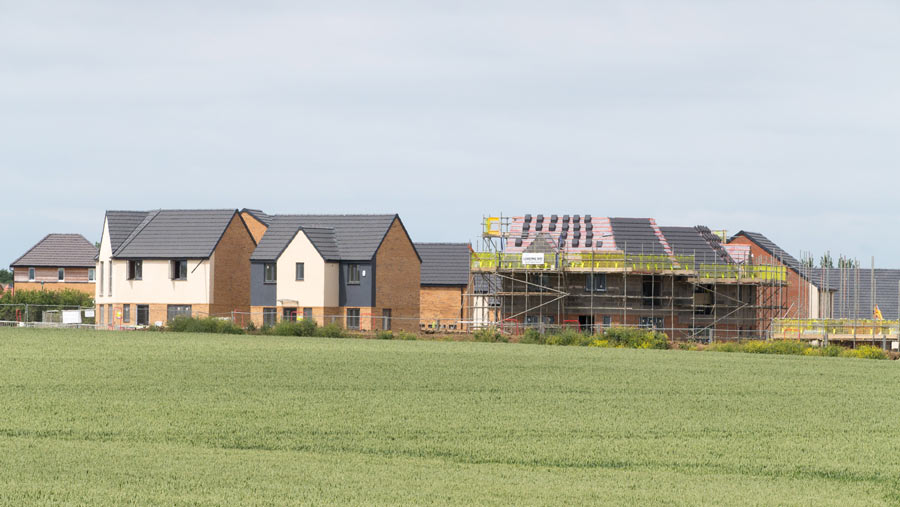Biodiversity net gain – legal issues for farmers
 © Tim Scrivener
© Tim Scrivener Biodiversity net gain (BNG) sites are already in demand.
Here, Julie Robinson, agriculture partner at Roythornes Solicitors, talks to Farmers Weekly about the legal considerations.
See also: Defra BNG credit prices give open market a steer on values
On the face of it, providing biodiversity units may seem like a tempting option, particularly in the light of the headline prices being reported for such units, says Julie.
However, it is not for the faint-hearted, and there is a lot of groundwork to be done, on paper, in negotiation and practically, in delivering the biodiversity units and being confident of that delivery, before additional net income is secured.
“I’m worried that farmers developing their own BNG schemes may be left behind unless they prepare well; there are a lot of experienced organisations out there that are gearing up for the new regime,” says Julie.
These include some well-resourced operators in the conservation and environmental fields.
This makes it important that farmers and landowners make their projects stand out, through a professional approach using good ecologists with the right experience and understanding of what is required.
They should be part of a whole team of advisors, which should include an accountant, a lawyer and in some cases a land agent and or broker, suggests Julie.
Having your sale agreement, management plan and Section 106 or conservation covenant checked by someone familiar with such documents is a must.
The BNG regime

© Tim Scrivener
From January 2024, developers of both residential and commercial projects will have to ensure that the biodiversity associated with their sites is enhanced by at least 10% compared with a site’s baseline biodiversity.
The requirement is statutory and will be imposed as a planning condition at the point planning permission is granted.
Because many developers will not be able to provide the required uplift on site, they are interested in others building biodiversity elsewhere, for which they will pay, by buying the biodiversity units created.
To discharge the planning condition, developers will need to have a biodiversity gain plan approved by the local planning authority (LPA). This plan sets out how the BNG requirement will be met.
Make your BNG offering stand out
- Consider partnering with a well-regarded broker or habitat developer who is familiar with your area, including upcoming development and the LPA’s approach to BNG
- Seek out opportunities to add value by connecting your project with other nature sites – this is a key opportunity to add value so contact the local cluster farmer group or other landscape-scale nature and environment initiatives
- Make your project as professional as possible – there will be plenty of competition. Use experienced and competent ecologists, along with other good advisers
- Budget your biodiversity project plan very carefully, accounting for risks. Talk to others who are trying or have tried to achieve similar outcomes on similar land
- Ensure that your BNG project is carried out in line with BS8683
- Invest time in understanding the implications and risks associated with the project (including generation change) so that you can allay any doubts about its deliverability.
An ecologist’s report on the current condition of the land is the starting point for the plan, with a Defra statutory biodiversity metric being used to calculate the level of biodiversity before the development (the baseline) and to show how the minimum 10% uplift in biodiversity will be achieved.
This can be by on-site or off-site enhancement or a mix of the two. Developers can also buy statutory biodiversity credits from Natural England, but these have been priced high so that this operates as market of last resort.
Where the developer is using off-site habitat creation or enhancement, a detailed habitat management and monitoring plan will need to be submitted with the biodiversity gain plan.
Julie outlines steps for a farmer considering providing biodiversity units:
- Before deciding what land to put into BNG, check local nature designations to see whether any of the farm is strategically located in terms of nature recovery. Even if your land is not designated, there may be an uplift in the value of the units you propose to create if it is close to a strategic area. A small uplift in the value of the habitat will be given by the metric for sites of strategic value. The metric user guide states that a high value of 1.15 units will be awarded where the location has been identified within a local plan, strategy or policy as being ecologically important for the specific habitat type or where that habitat has been identified as being locally ecologically important. An early conversation with conservation bodies or the LPA may be useful.
- Identify your BNG site – check the registered title and any other constraints (see checklist below).
- Engage a good ecologist to establish the baseline of the site and agree what habitat creation or enhancements are suitable and achievable and the projected number of biodiversity units that will be delivered.
- Create a formal habitat management and monitoring plan.
- Secure the project, via a planning obligation (usually a Section 106 agreement which is a condition attached to a planning permission) or a conservation covenant with a responsible body. This may happen at a different stage, depending on the circumstances. Other legal agreements may also be needed.
- Register your BNG site on the national biodiversity gain register site, for which there will be a fee, and on any local register. You will need to submit your habitat management and monitoring plan as part of that registration and evidence of how you have secured the project.
- Find a purchaser for all or some of the biodiversity units.
The purchasing developer will then reference your gain site registration in their biodiversity gain plan submission to the LPA.
The above steps may happen in a different order. For example, you may make contact, and design your project with a developer earlier in the process.
Whatever the order, the developer cannot make use of the biodiversity units you sell them until the corresponding BNG site has been secured by a legal agreement and registered on the national biodiversity gain register.
BNG delivery checklist questions

© Tim Scrivener
1. Who has legal title to the freehold of the land proposed for BNG delivery?
It is important to check at the outset so that the person entering a BNG agreement has the right to do so.
This may also be an opportunity to organise any change that may suit the family or the business.
Any planning obligation to secure the biodiversity enhancement will need to be signed up to by the freehold owner(s) of the land title, and, except in situations where someone has a long enough lease to commit to a 30-year biodiversity project, this will also be needed in a conservation covenant.
2. Is there a charge against the land to secure borrowing?
If yes, then contact lenders early as they will need to give their consent and be a party to the planning obligation or conservation covenant.
They may have concerns about the implications for the value of the proposed BNG land.
Where this is the case, depending on the amount borrowed and the size of the parcel, one option may be to remove the security for those fields. However, banks will charge for rearranging security.
3. Is anyone else in occupation?
It’s an obvious point but you will need to check that there is no-one with rights to occupy or use the site who could put the BNG project at risk.
Shooting and mineral extraction rights come under this heading, although in some cases shooting rights can continue to be exercised, it all depends on the plan.
4. Are you already signed up to an environmental scheme?
If so, you will need to ensure that the biodiversity enhancements do not conflict with, and are additional to, your environmental obligations under the scheme.
5. What are the risks to the project?
For example, is there public access, with associated risks to newly emerging meadow or grass growth?
Flooding could be another risk, in terms of newly established planting being washed away.
You are obliged to deliver the habitats in the plan so think carefully about what is achievable and assess the risks. For example, scrub sounds easy, but it is not necessarily so.
6. Timing – when are you going to begin the habitat creation or enhancement?
This is an important decision.
You can wait until you have secured a buyer for your biodiversity units, saving on upfront speculative investment, or you can opt to begin the work ahead of selling – this may help achieve a better price for your units but will need financing.
Accurate costing, including accounting for those risks, will be essential.
7. Who is going to carry out the biodiversity enhancement work?
If you are planning to use a third-party contractor, make sure there is an agreement in place with them and appropriate provisions to cover unsuccessful establishment (for example, who will be liable for the costs of replanting?).
8. Monitoring and reporting – who will be responsible for this throughout the life of project?
Anyone buying or inheriting the legal title will be bound by the planning obligation or conservation covenant.
However, in practical terms, the person setting out now on a 30-year agreement may be retired from the farming business well before the 30 years is up, so a successor should be identified, they should understand the obligation and their access to funds to fulfil their obligations should be considered too.
9. How will the required management and monitoring/reporting be done?
This will be of interest to the LPA/responsible body, and the developer who is paying you for the biodiversity units.
You could set aside part of that payment (for example, in a secure account held by a third party) to give reassurance on this point; you may be required to do this under any Section 106 agreement.
10. What are the tax implications?
Take specialist advice on this to account for any potential downsides.
A government consultation on the income and capital tax treatment of long-term agreements for environmental land uses closed on 9 June. However, the government has yet to announce what that treatment will be.
Source: Julie Robinson, Roythornes
